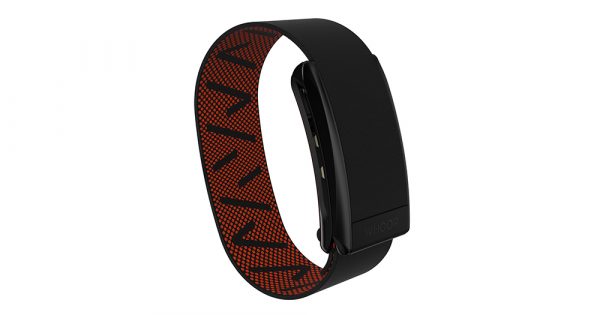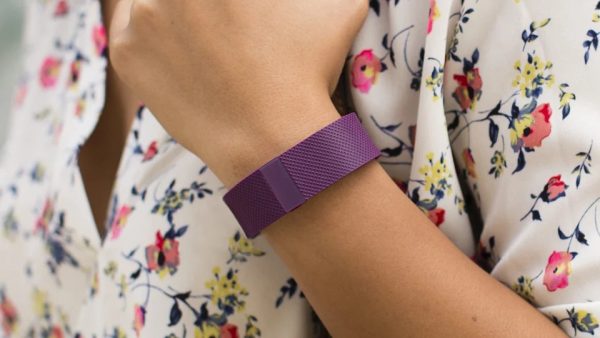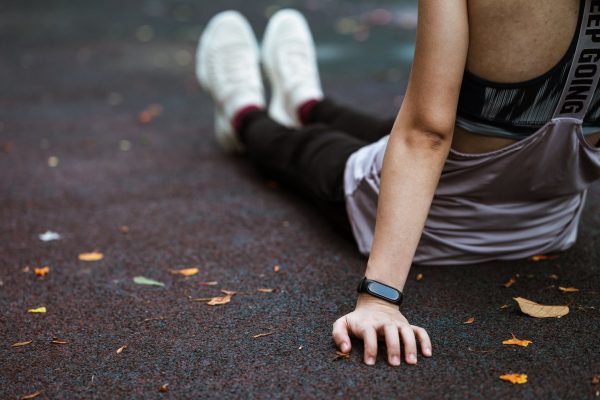The Whoop fitness tracker is a novel, exciting, and effortless way to get information about your body. The wearable provides a better amount of insight into your health and performance than other fitness trackers. Every piece of data is quantified and recorded through an app so you can track your health. So let’s take a closer look at the Whoop fitness tracker and how it works.


What Is the Whoop Fitness Tracker?
The Whoop fitness tracker is an electronic device that can keep track of a person’s physiologic data. The device is wrapped around a strap that allows it to be worn around the wrist at all times. It takes on the appearance of a bracelet or watch, but it has an entirely different purpose, and that is to collect and analyze data.
The Whoop tracker is capable of detecting a multitude of fitness and health indicators. Some of the health indicators it tracks include heart rate variability, sleep quality, respiratory rate, and so on. It can also track the balance between exertion or physical activity and rest, as well as sleep. All of this data is quantified and reported to a dedicated mobile app from where you can see your results.
Whoop targets a very specific demographic: professional athletes who constantly engage in physically demanding activities. Having access to physiologic information is crucial to athletic performance. It allows athletes to track their baseline data, as well as progress with a regimen. This information helps them to predict future performance as well as make crucial decisions.
There are already three versions in the Whoop tracker lineup. However, for this review, we will focus on the latest edition of the tracker, which is the Whoop version 3.0.
Also, read about Amazon’s first artificial intelligence (AI) assisted fitness trackers, the Amazon Halo.
Whoop Fitness Tracker Review
Availability


The Whoop fitness tracker has two components: the tracker and its strap. The tracker is the constant variable in this equation, a single option with no alternative. Whoop does offer options when it comes to the color, but not the material, of the strap. There are a total of 16 color options for the strap, including gray, dark blue, denim blue, red, and lime green.
Whoop trackers are available only through the Whoop online store. They may occasionally pop up on online retail stores, but their presence there is relatively rare. Purchasing outside of the official website also poses a risk that you could get a fake or pre-owned product. The best way to ensure that you get an original device plus warranty is to buy through the official store.
Cost


Whoop has an unusual installment-based payment policy. Instead of paying the full amount outright, you can pay them up in monthly installments. The only requirement is a membership, which of course, includes linkage to your credit card. You can choose from a total of three plans, which cost between USD 18 and USD 30 per month. Whoop also gives members the option to pay an annual fee, but this has to be paid on the spot.
Whoop has a six-month payment policy that requires members to pay their monthly installments for at least six months. It normally takes around a year and a half to about two years to pay up the full amount. The less you have to pay for each month, the longer it will take to fulfill your obligation.
Whoop has a return policy that gives members thirty days to return the product after the commencement of their membership. However, members who choose to return the product will still have to pay six months’ worth of installments.
Design


Build Quality
Whoop 3.0 has a very discreet appearance. It doesn’t have an LCD screen, timer, or step counter, which is normally present in other fitness trackers. The only thing you’ll find at the top portion of the fitness tracker, where the LCD screen normally should be, is a strap. The strap runs along the top and bottom portions of the tracker to cover it.
The tracker has a removable battery pack that you have to slide off from the tracker when it needs to charge. The package includes a USB cable that connects at one end to the battery pack and a USB port at the other. It takes between one and half hours to two hours to charge the battery pack at full capacity. You’ll have to pop the battery pack on top of the tracker after charging. If you have to use your tracker all the time, you can buy an extra battery pack to switch out with.
The entirety of the tracker is waterproof and water-resistant. Without a doubt, this should make it safe for you to wear your device while doing water-based activities. That may include handwashing, showering, swimming, sailing, and so on.
Materials
The interior of the tracker is sealed off and completely inaccessible to the user. A hard shell made of plastic and marine-grade stainless steel protects the electronic components inside. Additionally, these materials are also responsible for making the tracker water-resistant, though you still have the strap to offer it additional protection.
The composition of the strap is mostly nylon, which the company describes as a type of “nanostretch material.” The nylon material makes the strap feels soft and stretchy but sturdy at the same time. The softness and elasticity of the strap make it comfortable to wear for long periods. But at the same time, you can expect the band to hold its form for a long time so as not to warrant an early replacement.
The nylon-based component of the strap may cause an allergic reaction for some people, but it should be relatively rare. Unless you have a pre-existing allergy to nylon, then wearing the strap shouldn’t cause any irritation. But you can always wash the strap out or switch it out temporarily with another strap.
Comfort
As for Whoop 3.0, it can’t be considered entirely weightless, but it is lightweight. The nylon component of the strap makes it soft yet elastic to touch. It should feel as though you’re wearing a mid-sized watch on your wrist, which is something that’s easy to get used to. The combination of the nylon strap and lightweight tracker makes for very comfortable all-day wear.
The strap was designed to be worn about an inch below the wrist. But you may also wear it anywhere between your wrist and your bicep. Also attached to the strap is a small plastic clip. The clip allows you to adjust the fit of the strap around your wrist so it doesn’t fall out. Besides that, the clip is crucial for removing the strap to wash it or switch it out.
Whoop Fitness Tracker: Features and How to Use Them


The Whoop fitness tracker (Version 3.0) has a singular purpose, and that is to track physiologic data. The importance of physiologic data in the world of sports cannot be undermined. For an athlete whose body is their greatest asset, having detailed information is crucial. It’s similar to the way a car racer has to know everything about the car they intend to drive in. Here are some of the major health indicators that the Whoop tracker keeps track of:
Sleep Tracking
Whoop 3.0 also tracks your sleep performance across a variety of metrics, not just the duration of sleep. It can tell the difference between the total time you’ve spent lying in bed compared to your actual duration of sleep. In addition, it can track the amount of time you spend across the different stages of sleep. It will also keep track of the number of disturbances, as well as your respiratory rate, during sleep.
Workout Tracking
The Whoop fitness tracker (Version 3.0) constantly listens to your heart rate, and thus it can automatically tell when you’re working out. For example, if you start running, your heart rate speeds up, which alerts the device that you are working out. The tracker will take note of your average and maximum heart rate, as well as the duration and distance covered by your exercise. It will also use the distance traveled as well as your heart rate to estimate the total number of calories you’ve expended for each session. All results are available through the app.
If you are on the lookout for a new workout regimen to help you lose weight or stay fit, also read reviews about fitness apps Lekfit and Daily Burn.
Strain and Recovery
The Whoop fitness tracker (Version 3.0) presents the user with two indicators that are not available in any other fitness tracker, and that is strain and recovery.
Strain measures the amount of stress you’re putting on your body, while recovery measures how well you can cope with the strain. The device calculates strain based on various factors, including your total activity, heart rate, and calories burned. On the other hand, it measures recovery based on your heart rate, heart rate variability, respiratory rate, and sleep quality.
Both metrics are measured within a scale divided into sub-categories. Scoring for strain is indicated between 0 to 21. Apart from this, the score can be further classified into four categories: light strain (0 to 10), moderate strain (10 to 14), high strain (14 to 18), and all-out strain (above 18). Meanwhile, recovery is measured on a scale of 0 to 100. The score can be further classified into three sub-categories: low recovery (below 33), moderate recovery (34 to 66), sufficient recovery (above 67).
Recovery and strain are negatively correlated. That means that their results are expected to mean the opposite for the other. A high strain score is usually accompanied by a low recovery score, while a high strain score usually accompanies a low recovery score. Given the way the metrics are calculated, it’s possible to get a balanced score.
Heart Rate Variability (HRV)
Heart rate variability (HRV) is a measure of the regularity of the intervals between a person’s heartbeats. The scientific community largely recognizes HRV as one of the best indicators of the body’s ability to handle stress. A high variability indicates a stressful state, while a low variability indicates a restful and calm state. HRV is a relatively new metric added to the health indicators, and most fitness trackers have only started to adopt it. There are also therapeutic bands like Apollo Neuro that focus on HRV treatment via touch-based therapy.
Respiratory Rate
Respiratory rate is a measure of cardiovascular health and overall fitness. The device measures respiratory rate by the number of breaths (respirations) per minute (rpm). A normal person takes between 12 to 20 breaths per minute in a stationary state and up to 40 to 60 times per minute in a physically active state. Having said this, a respiratory rate that is below or above the normal rates for stationary and physically active states may indicate a serious disease or even an infection such as Covid-19. Case in point, a PGA professional golfer Nick Watney noticed an abnormal respiratory rate. Not long after, Watney was diagnosed with COVID-19, even before he exhibited any symptoms.
Daily Journal
The Whoop app has a daily journal that considers other factors that may affect your sleep or recovery. You can select the questions from a list of lifestyle-based topics, depending on what applies to you. For example, you can have the app ask you about your daily intake of alcohol or caffeine. The app will then generate a weekly or monthly report about your total consumption and how it has affected your heart rate, sleep, and so on.
Whoop Fitness Tracker vs Competitors
The Whoop fitness tracker (Version 3.0) is only one of a few options under the fitness tracker category in the market. Depending on the features that you want to see in a fitness tracker, some options may better fit your requirements. Here is a comparison of the Whoop tracker with other fitness trackers:
| Whoop 3.0 | Apple Watch Series 6 | Fitbit Charge 5 | Garmin Vivoactive 4 | |
| Display | n/a | 1.58-inch display | 1.58-inch display | 1.3-inch display |
| Smartphone Compatibility | Android, iOS | iOS | Android, iOS | Android, iOS |
| Battery Life | Five (5) days | 18 Hours | Seven (7) days | Six (6) days |
| Cost | USD 18 to 30 per month (Approx. 18 months) | Approx. USD 399 to USD 499 | USD 179.99 to USD 200 | Approx. USD 349 to USD 370 |
| Water-resistant | Up to 10 meters | Maximum 50 meters | Up to 50 meters | Maximum 50 meters |
| Heart Rate Monitoring | ✔ | ✔ | ✔ | ✔ |
| Heart rate variability (HRV) | ✔ | ✔ | ✔ | ✔ |
| GPS | n/a | ✔ | ✔ | ✔ |
| Sleep Tracking | ✔ | ✔ | ✔ | ✔ |
Final Thoughts on Whoop Fitness Tracker (Version 3.0)


Whoop 3.0 is ideal for professional athletes. Nonetheless, you don’t necessarily have to be an athlete to benefit from it. For example, people who love to analyze data, especially about their bodies, may appreciate the troves of data it provides. In addition, HRV and recovery monitoring can also help people who are particularly stressed about work or life in general. Not only that, people with preexisting health conditions such as heart disease or sleep apnea may also benefit from the constant monitoring of baseline health indicators. However, data can only ever go so far. The presumption is that every person will still make the effort required to improve their health and fitness.
Also read about health-focused podcasts that can help you achieve your fitness goals.




















